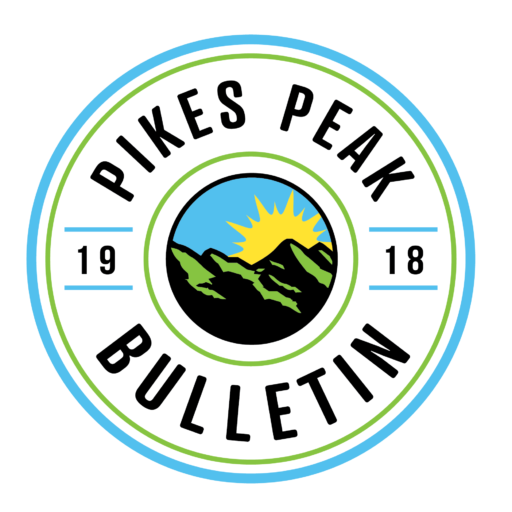US. Congressional Representative Jeff Hurd’s (R-District 3) Productive Public Lands Act asks Congress to undermine years of local planning for the Bureau of Land Management’s Eastern Colorado Resource Management Plan, which was finalized in 2024 and guides management for approximately 658,000 acres of public lands in central and eastern Colorado.
The bill proposes to amend the ECRMP and eight other BLM resource management plans because, in Hurd’s words, they “lock up public lands” from oil and gas leasing. This would shift millions of acres of public lands from locally supported balanced plans to support an “energy crisis” narrative, despite the fact that the US is producing more oil and gas than ever before, with 73.6% of BLM Lands in Colorado already open to Oil and Gas leasing, including over 76% of the ECRMP planning area.
Reopening this plan would be a waste of public resources. BLM’s final ECRMP did not face protests from the energy industry, area counties, or related stakeholders. When the final plan was released last year, Kathleen Sgamma, former president of the Denver-based oil and gas trade group Western Energy Alliance and the recent nomination for BLM Director (who has since withdrawn her consideration), stated in the Colorado Sun that for BLM’s finalized ECRMP, “BLM chose a balanced alternative, not the most extreme conservation-only alternative … BLM has a duty to balance energy development with environmental protection.” In fact, the only protests came from environmental non-governmental organizations and the Citizens of Huerfano County, who were seeking to close oil and gas leasing in Huerfano County.
This bill would amend the ECRMP from the balanced approach alternative (D), formed through 10 years of community processes and input, to the “No Action” alternative (A), which would revert back to the previous and archaic iteration of the plan from 1986 and 1996, or to the “Human Demand” alternative (C). Similar to the No Action Alternative, the Human Demand Alternative would:
● Eliminate all of the 87,400 acres of recently designated priority hunting and fishing areas (Backcountry Conservation Areas)
● Slash Recreation Management Areas from 71,400 acres to 15,300 acres
● Eliminate all 60 miles of Wild and Scenic Rivers, which is predominantly made up of the Arkansas River for its recreational values
● Eliminate all 114,700 acres of Lands with Wilderness Characteristics (LWC)
● Slash Areas of Critical Environmental Concern (ACEC) from 101,500 acres to 34,800 acres
● Undermine the South Park Master Leasing Plan, formed by local community input for the South Park National Heritage Area
The ECRMP already has the vast majority (over 76%) of the planning area, over 2.7 million acres, open to oil and gas leasing. Additionally, the majority of new recreation and conservation designations in the ECRMP are in areas that were found to have no to low potential for oil and gas production (e.g., the Arkansas River Canyonlands and Gold Belt region). As such, opening these areas up to oil and gas leasing would have no to minimal effect on oil and gas production.
BLM Colorado State Director Doug Vilsack stated at the Feb. 13 Rocky Mountain Resource Advisory Council meeting that because resource management plans (like the ECRMP) are complete, BLM can more efficiently make decisions when it comes to mineral and energy development around the state. BLM Colorado is currently offering up to 63,182 acres (almost 99 square miles) in their September 2025 and December 2025 Oil and Gas Lease Sales.
Rep Hurd’s bill ignores Colorado voters, who overwhelmingly (76%) want their leaders to place more emphasis on protecting clean water, clean air, and wildlife habitat instead of maximizing oil and gas drilling. Multiple public comment periods and public meetings throughout the ECRMP process documented that the public wanted a balanced plan with recreation, conservation and the climate prioritized over oil and gas development, which the local BLM office delivered. Citizens for Huerfano County, who protested the ECRMP due to the unique geological features of the dikes of the Spanish Peaks, are ironically represented by Rep Hurd.
In BLM’s 2023 ECRMP public comments report, BLM documented that throughout the 10-year planning process, the majority of public comments were focused on air resources and climate, followed by concerns for fluid minerals extraction. Additional top comments were in support for LWCs (2nd), support for ACECs (4th), support for terrestrial wildlife (5th), and support for recreation (6th).
Reopening this plan would be a waste of public resources. – Wild Connection
Why does the proposed Productive Public Lands Act discard local public input and community engagement processes that formed the balanced Eastern Colorado Resource Management Plan? This dangerous bill would not only dismantle progress made toward healthy local public lands and sustainable land management, it also threatens central Colorado’s thriving outdoor recreation economy. When this plan officially began in 2015, ECONorthwest did an economic study for the ECRMP planning area, finding that there were more than 1,230,000 visits that year for non-motorized recreation, which resulted in $54.3 million in spending to the local economy, supported 693 jobs and generated $40.1 million in personal income.
How can you make a difference? Contact your U.S. House Representative and let them know the threats that the Productive Public Lands Act poses to our local BLM managed public lands. All of the Colorado House of Representatives on Colorado’s Eastern Slope have representation within this planning area.
Additionally, if you live in one of the counties that has BLM public lands in this planning area (Chaffee, El Paso, Fremont, Huerfano, Lake, Park and Teller), contact your county commissioners as well! A lot of counties were participating stakeholders in this planning process, and they should know what a toxic bill like this would do to locally managed public lands in their county.
You can find more info and support Wild Connections at wildconnections.org.
Wild Connections is a science-based conservation organization that works to identify, protect and restore lands of the Upper Arkansas and South Platte watersheds to ensure the survival of native species and ecological richness.

